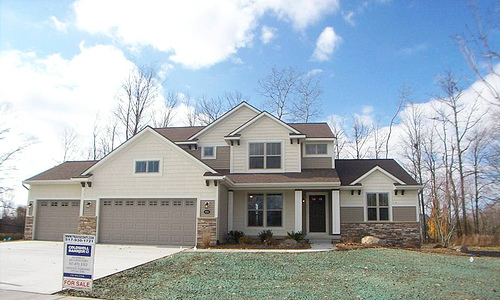Economy Watch: Homebuilder Confidence Heads for Basement
Builder confidence in the market for newly built, single-family homes was down again in July to its lowest level since April 2009, according to the National Association of Home Builders/Wells Fargo Housing Market Index released on Monday. The index fell two points to 14 from a downwardly revised number in the previous month.
July 20, 2010
By Dees Stribling, Contributing Editor
Builder confidence in the market for newly constructed single-family homes was down again in July to its lowest level since April 2009, according to the National Association of Home Builders/Wells Fargo Housing Market Index released on Monday. The index fell two points to 14 from a downwardly revised number in the previous month.
Considering that a standing of 50 for the index means that more builders see conditions as good than poor, the industry seems to be nearly unanimous in feeling that times will be very hard indeed during the post-tax credit months ahead. It probably isn’t helping that a lot of the building activity that would have happened this summer was moved forward to earlier in the year to take advantage of the tax credit.
One of the jobs of a trade organization’s chief economist is to put the best face on things, and NAHB chief economist David Crowe made a valiant effort in that direction on Monday. “The pause in sales following expiration of the home buyer tax credits is turning out to be longer than anticipated due to the sluggish pace of improvement in the rest of the economy,” he said in a statement. “That said, we do believe that favorable factors such as low mortgage rates, affordable prices, and demographic trends will help revive consumer demand for new homes this year.”
Silver Lining for CRE?
Will demand for commercial space of any kind see any kind of rebound in 2010 or 2011 for that matter? There are hints that it might be so.
For one thing, U.S. commercial real estate prices, according to Moody’s/REAL Commercial Property Price Indices, increased 3.6 percent in May, the second monthly increase this year (in April, the indices were up 1.7 percent). Investment pricing is an indirect indication of improving demand, as tenants who have the wherewithal take advantage of tenants’ markets all over the country.
“Luxco is a good example of a user with the financial profile required to seize opportunities in this tenants’ market,” Robert F. Smietana, president and COO of Chicago-based HSA Commercial Real Estate, told CPE regarding the lease of a 213,500-square-foot distribution facility that HSA developed in Hazelwood, Mo., a northwest suburb of St. Louis. “Luxco has strong credit and a growing business, factors that make the company a very attractive tenant at a time when many companies are struggling.”
The metro St. Louis industrial market has been one of many to take a sucker punch in recent years, and even as recently as the first quarter of 2010, the industrial vacancy rate rose from 9.2 percent to 9.4 percent compared with 4Q09, according to Cassidy Turley Commercial Real Estate Services. But there’s promise for the future: only three more industrial buildings will be completed in the entire market by the end of this year (two build-to-suit), and companies are expanding again, especially as U.S. manufacturing expands.
Smietana expects the market to turn around in the mid-term if not the short-term. “Luxco has a five-year lease, and rental rates may very well rise by the end of the lease term,” he observes. “Until then, we’re very happy to be housing a profitable, longstanding company with strong credit in a growing industry.”
Wall Street recovered some of its Friday losses on Monday, with the Dow Jones Industrial Average up 56.53 points, or 0.56 percent. The S&P 500 gained 0.6 percent and the Nasdaq advanced 0.88 percent.








You must be logged in to post a comment.